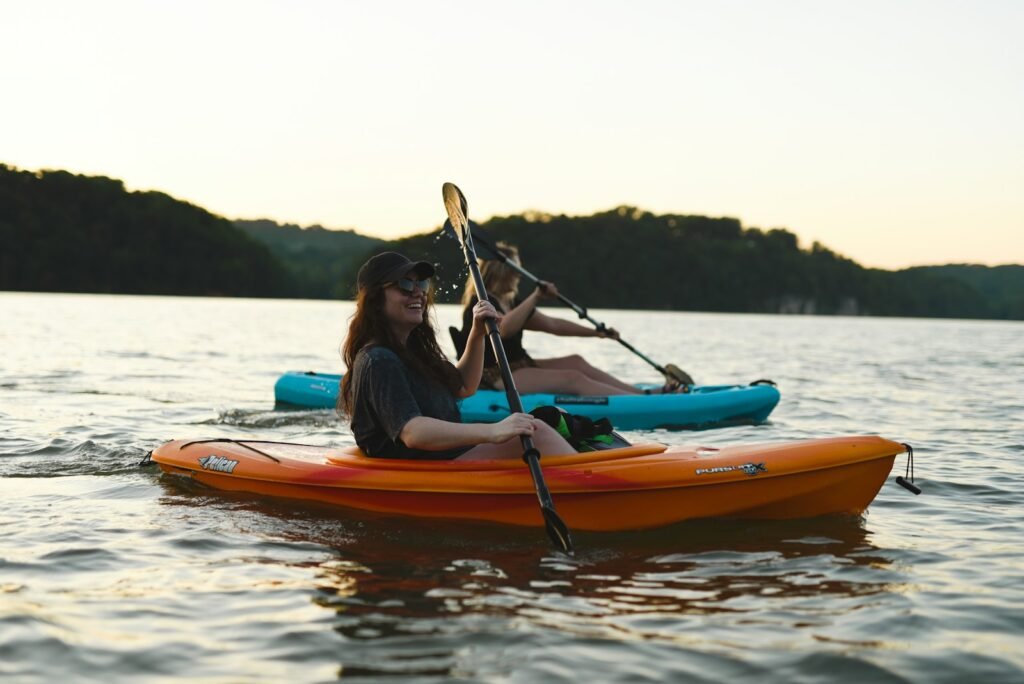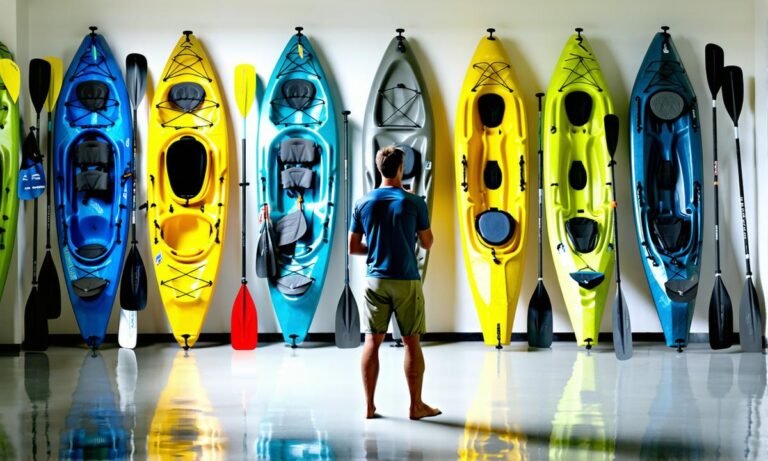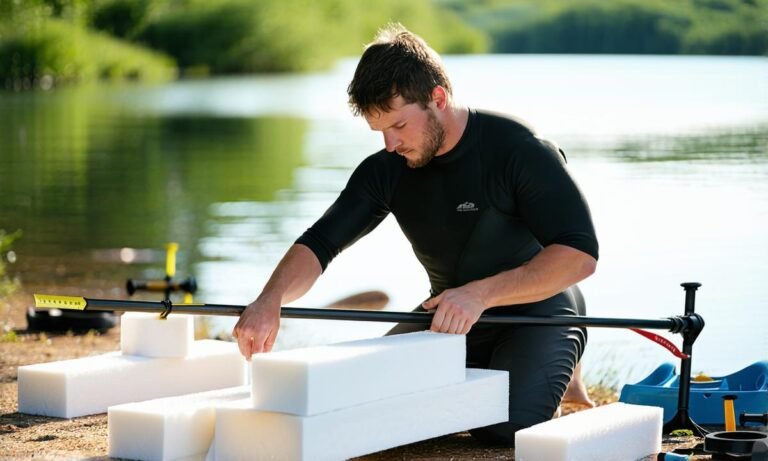Are Inflatable Kayaks Safe?
Ever pondered the safety of inflatable kayaks while planning your next water adventure? The question may have crossed your mind, especially if you’re new to this thrilling outdoor activity. Fear not! We’re here to shed some light on this topic in a fun and engaging way.
Yes, inflatable kayaks are safe. They are designed with durable materials that resist punctures and leaks, providing stability on water bodies ranging from calm lakes to rapid rivers.
Stick around as we dive deeper into why these vessels are reliable for both novice paddlers and seasoned adventurers alike. We promise it’s going to be an informative ride filled with fascinating facts about inflatable kayaks’ safety features.

What Makes Inflatable Kayaks a Popular Choice?
Inflatable kayaks are gaining popularity among outdoor enthusiasts and water adventurers.
Their distinct features and benefits contribute to their rising fame in the market. Let’s dig deeper into what makes inflatable kayaks a popular choice.
Ease of Transport and Storage
The key reason for the growing favoritism towards inflatable kayaks is their portability. Unlike traditional hard-shell kayaks, inflate-and-deflate models can be easily folded down to fit in a backpack or car trunk, making them an excellent choice for those with limited storage space or who frequently travel.
Durability Factor
Despite common misconceptions, modern inflatable kayaks are built with durable materials that resist punctures and leaks. They often have multiple air chambers ensuring safety even if one section gets damaged – this resilience adds to their appeal.
User-Friendly Design
Most inflatable kayak models offer user-friendly designs which make them ideal for beginners.
The wide hull design provides stability on the water reducing chances of capsizing. This aspect makes it attractive for novice paddlers seeking a safe yet adventurous experience.
Versatility Unleashed
Inflatable kayaks can tackle various water conditions from calm lakes to white-water rapids due to their buoyant nature and maneuverability.
As such, they cater to different types of paddling experiences thereby enhancing their popularity among varied users.
Safety Features of Inflatable Kayaks
When it comes to inflatable kayaks, safety is paramount. Built with innovative design and advanced technology, these watercraft offer a plethora of safety features that make them an excellent choice for both beginners and seasoned paddlers.
Let’s dive into more depth about what makes inflatable kayaks stand out in terms of security.
Durability and Stability
Inflatable kayaks are constructed from high-quality, puncture-resistant material that ensures longevity.
This robust build not only enhances the kayak’s durability but also significantly improves its stability on the water. The wide base offers better balance, reducing the risk of capsizing.
Buoyancy Chambers
One key feature that contributes to the safety of inflatable kayaks is their multiple buoyancy chambers.
If one chamber gets punctured or deflated while you’re on the water, others remain inflated keeping you afloat until you reach shore safely.
Safety Valves
Safety valves are another crucial component in inflatable kayaks. These devices allow for quick inflation and deflation, ensuring optimal performance at all times.
In case of over-inflation due to heat or pressure changes, these valves automatically release air preventing potential damage or accidents.
High Visibility Colors
Most manufacturers use high visibility colors for their inflatable kayaks as an added safety measure. Bright hues like yellow or orange make it easier for other boaters to spot you on open waters thereby avoiding collisions.
How to Use an Inflatable Kayak Safely?
Navigating the waters in an inflatable kayak can be a thrilling experience, but safety should always come first.
Ensuring proper usage of this watercraft is crucial to avoid accidents and enjoy your adventure to the fullest. Here’s how you can use an inflatable kayak safely.
Familiarize Yourself with The Kayak
Before venturing out into the water, take some time to familiarize yourself with your inflatable kayak. Understand its structure, parts, and operation mechanisms for better control during your ride.
Wear a Life Vest
No matter how good a swimmer you are, wearing a life vest is non-negotiable when kayaking. It provides buoyancy and keeps you afloat should you accidentally tip over or fall off the kayak.
Check Weather Conditions
Always check weather conditions before setting sail. Avoid going out if there are signs of stormy weather or high winds which can make controlling your inflatable kayak challenging.
Paddling Techniques
Proper paddling techniques not only ensure that you move smoothly in the water but also help maintain balance thus preventing capsizing incidents.
Maintain Your Gear
Maintaining your gear is paramount for safe kayaking experiences. Regularly inspect your equipment for any damages and repair them promptly.
So now that we’ve covered these aspects, let’s dig deeper into other considerations when using an inflatable kayak safely.
- Avoid Overcrowding: Always adhere to the recommended weight limit of your inflatable kayak to prevent it from tipping over.
- Use a Safety Line: A safety line can be a lifesaver in case you fall off the kayak. It allows for quick and easy re-entry into the kayak.
- Stay Close to Shore: Especially if you’re new to kayaking, it’s safer to stay close to shore as winds and currents are usually milder.
Possible Risks and Challenges with Inflatable Kayaks
While inflatable kayaks offer a fantastic way to enjoy water sports, they come with their own set of potential risks and challenges.
These concerns may range from durability issues to maneuverability difficulties. Let’s dig deeper into these aspects so you can make an informed decision before venturing out on the water.
Durability Concerns
One of the most common concerns about inflatable kayaks is their durability. Although made with tough materials designed for rough use, they are still susceptible to punctures or leaks.
Sharp objects in the water or on shore could potentially damage your kayak, leading to deflation and possibly capsizing.
Maneuverability Issues
Inflatable kayaks may not provide the same level of control as hard-shell models due to their lightweight construction.
This can prove challenging when navigating through strong currents or windy conditions. It requires more effort from the paddler, which could lead to fatigue during long trips.
Setup Time
Setting up an inflatable kayak takes time as it needs inflation before each use and deflation after usage. This process might consume significant time especially if done manually without an air pump.
The following reasons highlight some key points that every prospective inflatable kayak owner should consider.
- Poor Performance in Rough Waters: Inflatable kayaks tend not perform well under rough sea conditions compared to traditional kayaks.
- Limited Speed: Due to their design and buoyancy properties, inflatables generally don’t glide as swiftly over water as hard-shell counterparts.
- Maintenance Requirements: Regular checks for leaks or damages are essential for maintaining safety standards.
Tips for Ensuring Your Safety While Using an Inflatable Kayak
Venturing out on the water in an inflatable kayak can be a thrilling experience. However, safety should always be your top priority to ensure a fun and worry-free adventure.
Here are some invaluable tips that will help you stay safe while using an inflatable kayak.
1. Familiarize Yourself with the Equipment
Before you hit the water, make sure you know your equipment inside and out. Understand how to inflate and deflate your kayak properly, adjust seats, and use paddles effectively. The more comfortable you are with handling your gear, the safer you’ll be during your outing.
2. Always Wear a Personal Floatation Device (PFD)
No matter how confident of a swimmer you may be, wearing a PFD is non-negotiable when kayaking. It not only provides buoyancy but also protects against hypothermia by adding insulation to your body.
3. Keep Track of Weather Conditions
Weather can change rapidly when you’re on open water; therefore it’s essential to check weather forecasts before embarking on any kayaking trip. Avoid venturing out in severe weather conditions or if there is any warning issued.
4. Learn Basic Rescue Skills
In case of capsize situations, knowing self-rescue techniques can be lifesaving; these include re-entering from the water or performing Eskimo rolls which require practice under supervision initially.
FAQs
How secure are inflatable kayaks compared to traditional ones?
Inflatable kayaks are considered quite safe. They’re designed with multiple air chambers, so if one gets punctured, the kayak will still float.
Can inflatable kayaks handle rough waters?
Yes, they can. High-quality inflatable kayaks are constructed to withstand rough waters and have proven their durability in various water conditions.
Do inflatable kayaks easily get punctures or leaks?
Not necessarily. Inflatable kayaks made from high-grade material can resist punctures and leaks effectively. However, they should be used properly and kept away from sharp objects.
What safety measures should be taken while using an inflatable kayak?
Always wear a life jacket when using an inflatable kayak. Also, avoid venturing into extreme weather conditions or very choppy waters if you’re not an experienced paddler.






